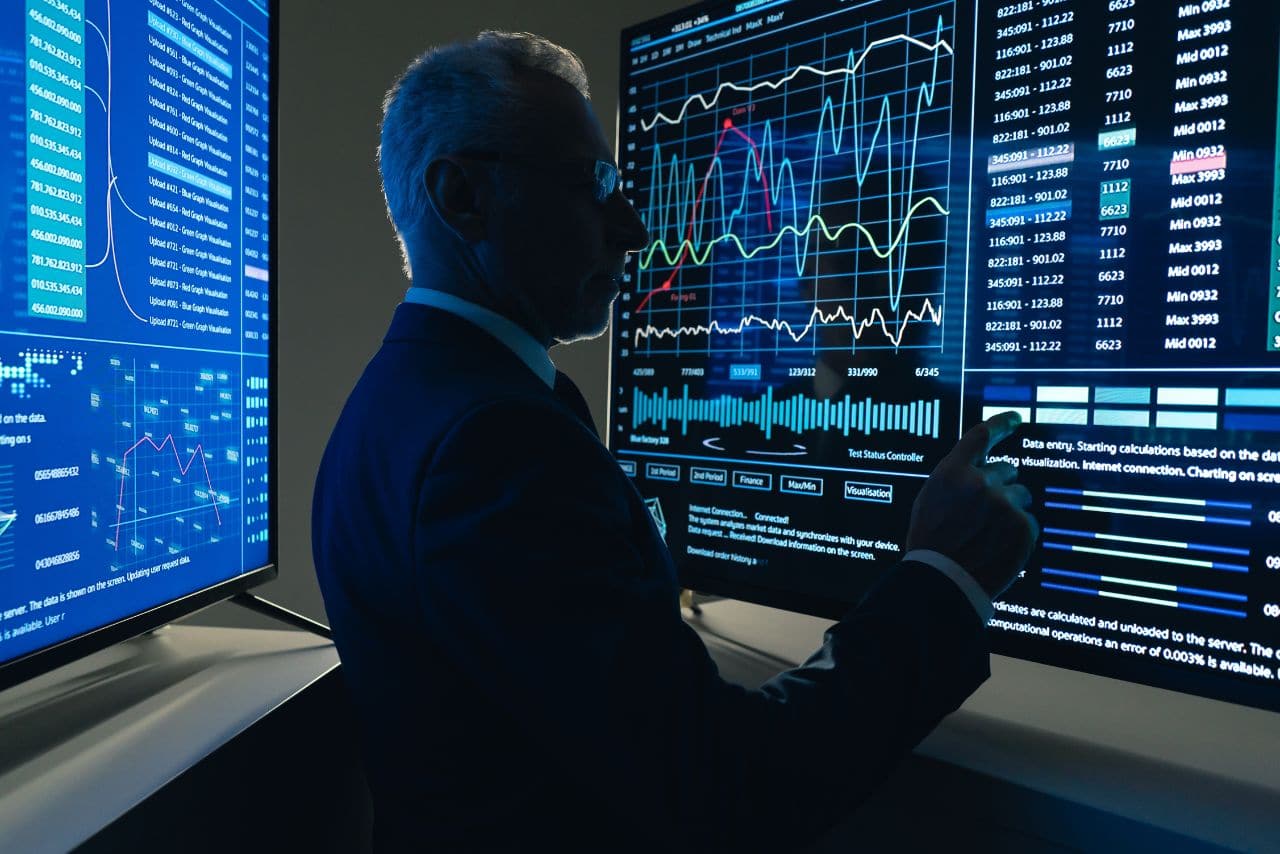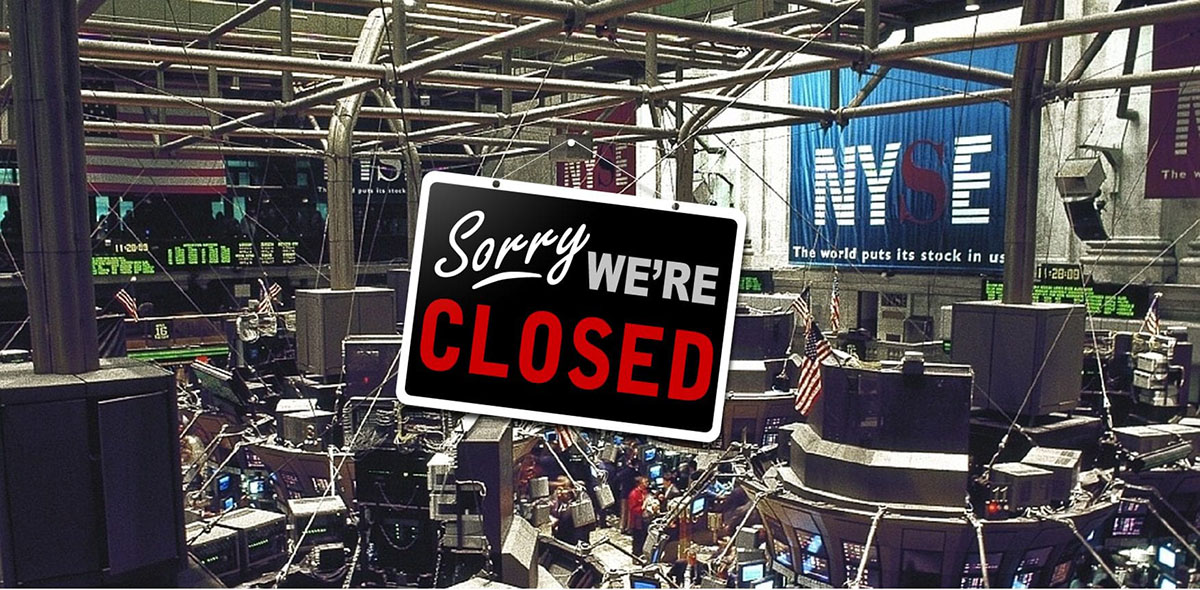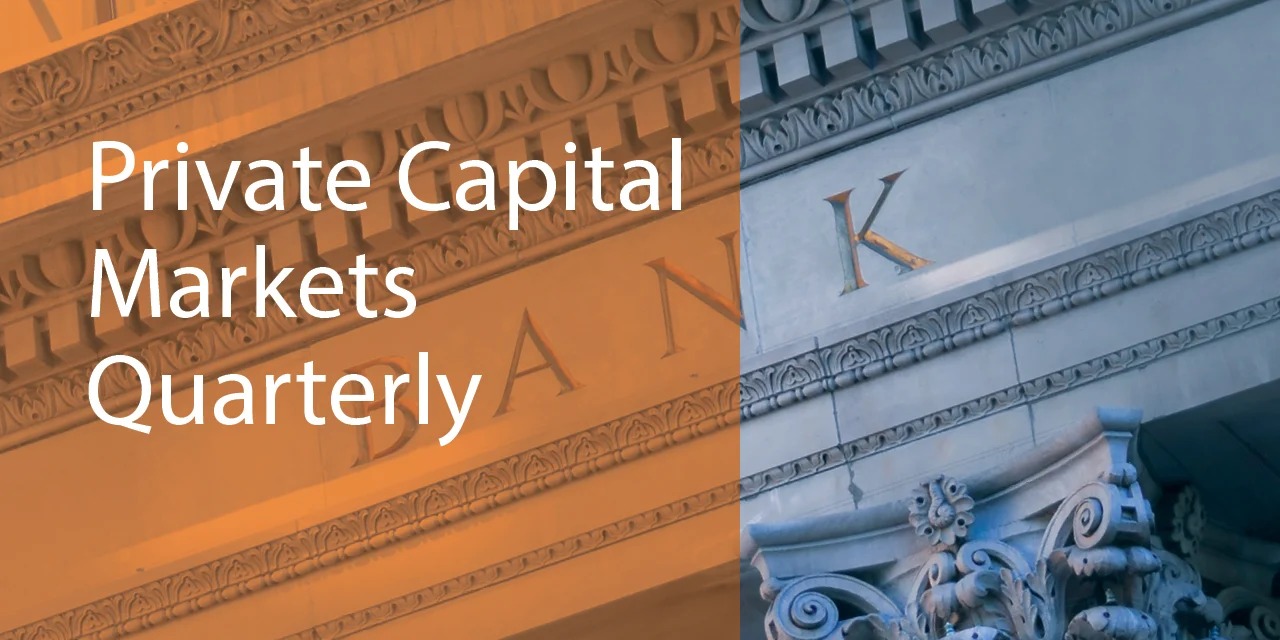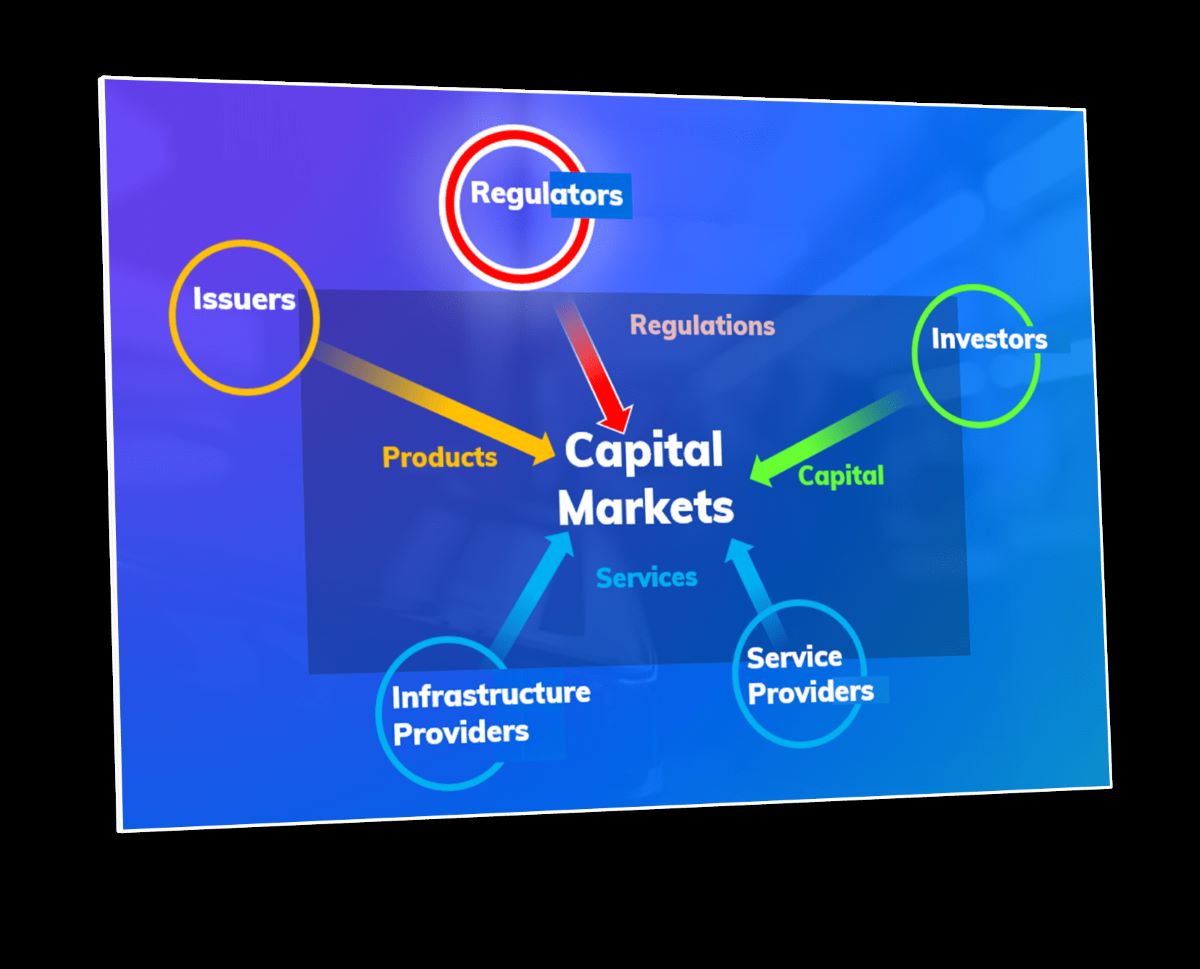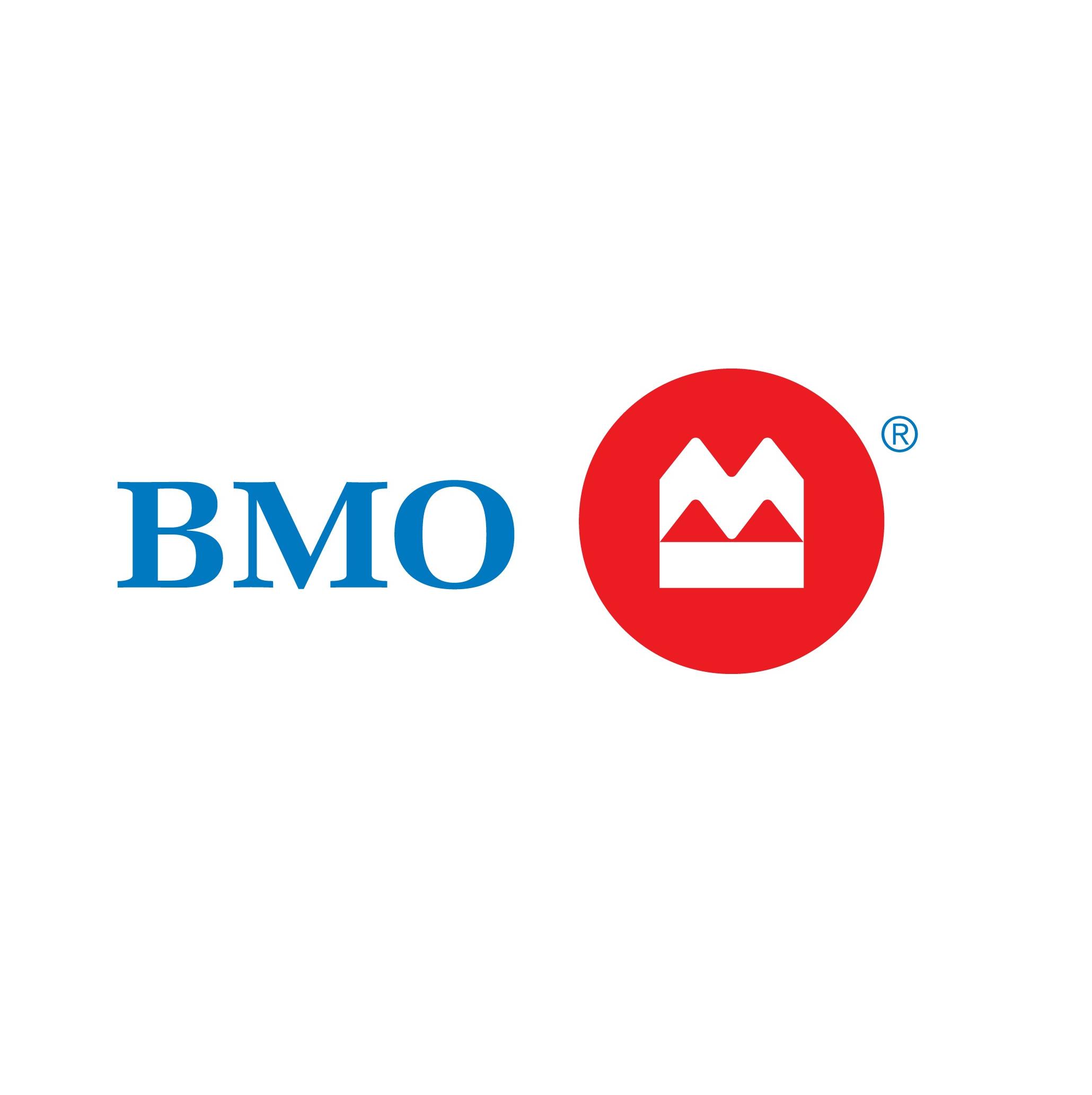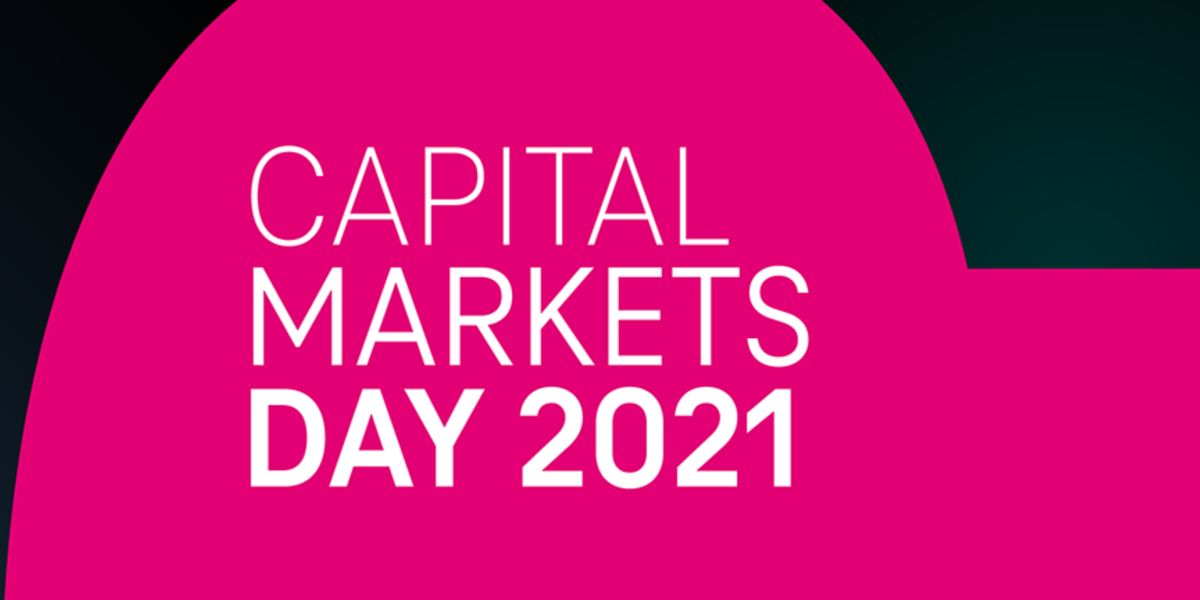

Finance
What Is A Capital Markets Day
Modified: December 30, 2023
Discover the importance of capital markets in the finance industry with our comprehensive guide on what a Capital Markets Day is and how it impacts businesses and investors.
(Many of the links in this article redirect to a specific reviewed product. Your purchase of these products through affiliate links helps to generate commission for LiveWell, at no extra cost. Learn more)
Table of Contents
- Introduction
- Definition of Capital Markets Day
- Purpose of Capital Markets Day
- Key Participants in Capital Markets Day
- Importance of Capital Markets Day
- Benefits of Capital Markets Day
- Structure and Format of Capital Markets Day
- Preparation for Capital Markets Day
- Key Components of Capital Markets Day
- Investor Communication during Capital Markets Day
- Case Studies on Successful Capital Markets Day
- Challenges and Risks in Conducting Capital Markets Day
- Best Practices for a Successful Capital Markets Day
- Conclusion
Introduction
Capital Markets Day (CMD) is an important event in the financial industry, providing companies with a unique opportunity to showcase their strategic plans, financial performance, and growth prospects to investors and analysts. It is a highly anticipated event that allows companies to communicate their vision and strategy to the financial community.
During a Capital Markets Day, senior executives of the company present in-depth information about the company’s operations, key projects, and long-term goals. This event serves as an interactive platform for companies to engage with the investment community and address any questions or concerns that investors may have.
The primary objective of a Capital Markets Day is to foster transparency and build trust with investors. It allows companies to demonstrate their commitment to delivering shareholder value by providing a detailed overview of their business model, competitive advantage, and growth prospects.
In recent years, the significance of Capital Markets Day has grown significantly as companies recognize the importance of establishing a direct line of communication with investors. This event plays a crucial role in shaping investor perceptions and influencing investment decisions.
In this article, we will explore the purpose, participants, structure, and benefits of a Capital Markets Day. We will also delve into the challenges and risks associated with organizing such an event and discuss best practices for a successful Capital Markets Day.
Definition of Capital Markets Day
Capital Markets Day (CMD) is a dedicated event organized by companies to provide detailed insights into their operations, strategies, and future prospects to investors, analysts, and other stakeholders. It is an opportunity for companies to showcase their business model, competitive advantage, and growth initiatives.
The purpose of a Capital Markets Day is to offer a comprehensive and transparent view of the company’s operations, financial performance, and growth prospects. It goes beyond the information typically disclosed in regular financial reporting and provides a deeper understanding of the company’s long-term strategy, key projects, and operational targets.
During a Capital Markets Day, senior executives, including the CEO, CFO, and other key leaders, present to the audience, which primarily consists of institutional investors, analysts, and financial journalists. The presentations are typically accompanied by Q&A sessions and one-on-one meetings with investors to provide further clarity and address specific inquiries.
Companies use Capital Markets Day as a strategic tool to effectively communicate their value proposition and differentiate themselves in the market. It allows them to highlight their unique selling points, market opportunities, and competitive position, enabling the investment community to make informed decisions about investing in the company’s stock.
Capital Markets Day differs from traditional earnings calls or annual shareholder meetings as it offers a more detailed and focused view of the company’s operations and long-term growth strategy. It provides a deep dive into various aspects of the business, such as product lines, geographic regions, customer segments, and operational efficiency.
The duration of a Capital Markets Day can vary depending on the company and the amount of information to be shared. It can range from a half-day event to a full-day or even multiple-day event. The format may include formal presentations, panel discussions, product demonstrations, facility tours, and networking opportunities.
Overall, Capital Markets Day serves as a crucial platform for companies to engage with the investment community, enhance transparency, and build long-term relationships with investors and stakeholders.
Purpose of Capital Markets Day
The primary purpose of a Capital Markets Day (CMD) is to provide companies with an opportunity to effectively communicate their strategic plans and growth prospects to investors, analysts, and other stakeholders. It serves as a platform for the company’s senior executives to showcase their long-term vision and business strategies, and to engage in meaningful discussions with the investment community.
One of the key purposes of a CMD is to enhance investor understanding and confidence in the company. By presenting a comprehensive view of the company’s operations, financial performance, and growth initiatives, companies aim to foster transparency and build trust with investors. This helps in attracting and retaining long-term shareholders who are aligned with the company’s strategic goals.
Furthermore, Capital Markets Day allows companies to differentiate themselves in the market. By providing in-depth insights into their unique business model, competitive advantage, and market opportunities, companies can showcase their value proposition and why they are an attractive investment option. This sets them apart from competitors and helps to attract new investors.
Another purpose of a CMD is to address any misconceptions or concerns that investors may have. It creates a direct line of communication between company executives and the investment community, allowing for open and transparent discussions. By addressing investor inquiries and providing clarifications, companies can mitigate potential misunderstandings and ensure that investors have accurate information to base their investment decisions on.
Furthermore, a Capital Markets Day enables companies to provide a detailed update on their strategic initiatives and progress towards achieving their goals. It allows them to highlight key projects, investments, and initiatives that will drive future growth. This information is crucial for investors to assess the company’s potential and make informed investment decisions.
In addition to providing insights into the company’s operations, CMD also serves as a platform for peer-to-peer learning and industry analysis. Investors and analysts attending the event can gain valuable insights into industry trends, competitive dynamics, and market opportunities. This can help them make more informed investment decisions across the sector.
Overall, the purpose of Capital Markets Day is to effectively communicate the company’s strategic plans, address investor concerns, build investor confidence, and attract long-term shareholders. It serves as a crucial event in strengthening the relationship between the company and its investors.
Key Participants in Capital Markets Day
A Capital Markets Day (CMD) brings together a diverse group of participants, each playing a crucial role in the success of the event. The key participants in a CMD include the company’s senior executives, institutional investors, analysts, financial journalists, and other stakeholders.
1. Senior Executives: The company’s senior executives, including the CEO, CFO, and other key leaders, are the primary presenters at a CMD. They provide in-depth insights into the company’s operations, strategic initiatives, financial performance, and growth prospects. Their role is to effectively communicate the company’s long-term vision, key strategic decisions, and growth strategies to the audience.
2. Institutional Investors: Institutional investors, such as pension funds, mutual funds, and asset management firms, play a crucial role in a CMD. They attend the event to gain a deeper understanding of the company’s operations, financial performance, and growth prospects. Institutional investors are typically long-term shareholders who have a significant influence on the company’s stock performance and corporate governance.
3. Analysts: Financial analysts from investment banks and brokerage firms attend CMDs to gather insights and evaluate the company’s performance and growth potential. They analyze the information presented during the event and use it to update their financial models and investment recommendations. Analysts also use CMDs as an opportunity to ask questions and seek clarifications from the company’s management team.
4. Financial Journalists: Financial journalists from news outlets and media organizations attend CMDs to report on the company’s performance, strategic initiatives, and future prospects. Their role is to provide accurate and timely information to the public and the investment community, enabling a broader audience to understand the company’s key messages and developments shared during the event.
5. Other Stakeholders: Other stakeholders, such as Board members, industry experts, and regulatory authorities, may also be present at a CMD. These individuals provide different perspectives and insights, enriching the discussions and adding further depth to the event. They may participate in panel discussions or provide additional context and expertise during Q&A sessions.
It is essential to have active participation and engagement from all key participants to ensure the success of a CMD. The interaction between the company’s management team and the investment community during the event helps enhance transparency, strengthen relationships, and foster trust between the company and its stakeholders.
Importance of Capital Markets Day
Capital Markets Day (CMD) holds significant importance for companies in the financial industry. It provides a platform to effectively communicate the company’s strategic plans, financial performance, and growth prospects to investors, analysts, and other stakeholders. Here are some key reasons why CMD is important:
Enhanced Investor Understanding: CMD allows companies to provide a comprehensive and detailed view of their operations, strategies, and future prospects. It goes beyond regular financial reporting, enabling investors to gain a deeper understanding of the company’s business model and growth drivers. By providing this in-depth information, CMD helps to enhance investor understanding and confidence in the company.
Transparency and Trust: CMD fosters transparency and builds trust with the investment community. By providing a detailed overview of the company’s strategic plans, key projects, and operational targets, companies demonstrate their commitment to delivering shareholder value. This transparency helps to build a long-term and sustainable relationship with investors based on trust and transparency.
Investor Sentiment and Perception: CMD plays a crucial role in shaping investor sentiment and perception towards the company. Through CMD, companies can directly address any concerns or misconceptions that investors may have, providing clarity and accurate information. This helps to mitigate potential misunderstandings and align investor perceptions with the company’s actual performance and prospects.
Differentiation and Competitive Advantage: CMD allows companies to differentiate themselves in the market by effectively communicating their unique selling points, market opportunities, and competitive advantage. It helps in showcasing the company’s value proposition and why it stands out from its competitors. This differentiation is important for attracting new investors and retaining existing shareholders.
Market Impact: The information shared during CMD has the potential to impact the company’s stock price and market perception. If the company effectively communicates its growth initiatives, financial targets, and strategic plans, it can generate positive market sentiment and investor interest. This can potentially lead to favorable stock performance and increased investor confidence.
Investor Engagement and Feedback: CMD provides a valuable opportunity for investors to engage directly with the company’s management team and ask questions. This direct interaction helps investors gain insights and seek clarifications, leading to a better understanding of the company’s operations and strategies. Furthermore, the feedback received from investors during CMD can provide valuable insights for the company to refine its investor communication and strategies.
Overall, the importance of CMD lies in its ability to enhance investor understanding, build trust, differentiate the company in the market, shape investor sentiment, and provide a platform for meaningful engagement between the company and its stakeholders. It is a critical event for companies in effectively communicating their long-term vision and growth plans to the investment community.
Benefits of Capital Markets Day
Capital Markets Day (CMD) offers numerous benefits to companies, investors, and other stakeholders. It serves as a strategic tool to effectively communicate the company’s vision, strategy, and growth prospects. Here are some key benefits of CMD:
Enhanced Investor Communication: CMD provides a dedicated platform for companies to communicate directly with investors. It allows companies to go beyond regular financial reporting and provide in-depth insights into their operations, financial performance, and growth initiatives. This enhanced communication helps to build trust, transparency, and a stronger relationship with investors.
Improved Investor Understanding: CMD offers a comprehensive view of the company’s business model, competitive advantage, and growth prospects. It allows companies to communicate their strategy, market opportunities, and key projects in a detailed manner. This helps investors gain a deeper understanding of the company’s operations and potential, enabling them to make more informed investment decisions.
Differentiation in the Market: CMD allows companies to showcase their unique selling points and competitive advantage. By effectively communicating their value proposition and growth initiatives, companies can differentiate themselves in the market. This differentiation helps to attract new investors, retain existing shareholders, and build a favorable market perception.
Enhanced Transparency: CMD fosters transparency by providing detailed information about the company’s operations and long-term plans. It allows investors to gain insights into the company’s strategic decisions, operational targets, and financial performance. This transparency helps to build trust and confidence among investors, as they have access to accurate and timely information.
Opportunity for Feedback and Engagement: CMD provides an interactive environment where investors can engage with the company’s management team and ask questions. This direct interaction allows investors to seek clarifications, address concerns, and provide feedback to the company. This feedback is valuable for companies to understand investor sentiment and refine their strategies and communication.
Long-Term Shareholder Relationship: CMD helps companies to attract and retain long-term shareholders who align with the company’s strategic goals. By effectively communicating their vision, growth plans, and value creation strategies, companies can build a strong and sustainable relationship with investors. This long-term shareholder base provides stability and support to the company.
Market Impact: A well-executed CMD can have a significant impact on the company’s stock price and market perception. Positive communication of growth initiatives, financial targets, and strategic plans during the event can generate positive market sentiment and investor interest. This can potentially lead to favorable stock performance and increased investor confidence.
Overall, the benefits of CMD lie in its ability to enhance investor communication, improve transparency, differentiate the company in the market, foster long-term shareholder relationships, and provide a platform for meaningful engagement between the company and its stakeholders. A successful CMD can positively impact the company’s reputation, market perception, and investor confidence.
Structure and Format of Capital Markets Day
Capital Markets Day (CMD) follows a structured format that allows companies to effectively communicate their strategic plans, financial performance, and growth prospects to investors, analysts, and other stakeholders. The structure and format of CMD may vary depending on the company and the nature of the industry, but there are some common elements:
1. Presentations: CMD typically starts with formal presentations by the company’s senior executives, including the CEO, CFO, and other key leaders. These presentations provide an overview of the company’s business model, strategic initiatives, financial performance, and growth prospects. The presentations are often accompanied by visual aids, such as slides or multimedia presentations, to enhance understanding and engagement.
2. Q&A Sessions: After the presentations, there is usually a dedicated session for investors and analysts to ask questions to the company’s management team. This interactive Q&A session allows for clarification, deeper insights into specific topics, and addressing any concerns or inquiries. It provides an opportunity for investors to engage directly with the management team and seek detailed information.
3. Breakout Sessions: In some cases, CMD may include breakout sessions where investors and analysts can meet with specific departments or business units. These sessions provide a deeper dive into particular areas of the company, allowing for more detailed discussions and a better understanding of specific operations or growth initiatives.
4. Panel Discussions: In certain instances, CMD may feature panel discussions with industry experts or key partners. These discussions focus on industry trends, market dynamics, competitive analysis, and strategic partnerships. Panel discussions enrich the event by providing different perspectives and insights that further enhance understanding of the company’s position within the industry.
5. Facility Tours and Demonstrations: Depending on the nature of the company’s operations, CMD may involve facility tours or product demonstrations to showcase the company’s capabilities, technology, or innovative products. These tours or demonstrations provide a tangible experience and deeper insights into the company’s operations and competitive advantage.
6. Networking Opportunities: CMD usually includes networking opportunities for participants to interact with company executives, industry experts, and fellow investors. These networking sessions foster relationship building, knowledge sharing, and provide an informal environment for further discussions and engagement.
Overall, the structure and format of CMD are designed to provide a comprehensive and interactive experience for participants. It allows for effective communication of the company’s strategy, financial performance, and growth initiatives while providing a platform for investors and analysts to seek clarifications, gain deeper insights, and engage directly with the company’s management team.
Preparation for Capital Markets Day
Preparation is key to ensuring a successful Capital Markets Day (CMD). It involves thorough planning, coordination, and attention to detail to effectively communicate the company’s strategic plans, financial performance, and growth prospects. Here are some important steps in preparing for a CMD:
1. Define Objectives: Clearly define the objectives and key messages that need to be communicated during the CMD. This includes identifying the strategic initiatives, financial targets, and growth prospects to be highlighted. Understanding the key goals will help in shaping the content and structure of the event.
2. Develop the Program: Create a detailed program that outlines the agenda, presentation topics, and speakers for the CMD. Ensure that the program covers all key aspects of the company’s operations, including financial performance, market opportunities, competitive advantage, and long-term strategy. Assign presentation slots to relevant executives and subject matter experts.
3. Content Development: Prepare the content for each presentation, ensuring that it aligns with the objectives and key messages of the CMD. The content should be informative, engaging, and visually appealing. Use relevant data, charts, and visuals to support the narrative and enhance understanding. Review and refine the content to ensure accuracy and clarity.
4. Rehearsals: Conduct rehearsals with the presenters to ensure that they are well-prepared and deliver a seamless presentation. Rehearsing helps in refining the content, practicing the timing, and ensuring effective communication. Encourage presenters to anticipate potential questions and prepare suitable responses.
5. Audio-Visual Setup: Set up the necessary audio-visual equipment, such as projectors, screens, microphones, and lighting, to ensure a smooth and professional presentation. Test the equipment in advance to identify any technical issues and make necessary adjustments. Ensure that the presentation slides and other visuals are visually appealing and in line with the company’s brand guidelines.
6. Guest Management: Plan the logistics for the event, including venue selection, seating arrangements, and registration for participants. Arrange for guest amenities, such as refreshments and meals, to provide a comfortable and enjoyable experience for attendees. Maintain effective communication with the participants, providing them with necessary event details and updates.
7. Media and Investor Relations: Coordinate with the media and investor relations teams to ensure that appropriate press releases, presentations, and media materials are prepared. Engage with media outlets and analysts to generate interest in the CMD and secure media coverage. Provide media and analyst briefing sessions before or during the event to address specific inquiries and facilitate accurate reporting.
8. Post-Event Follow-up: After the CMD, follow up with participants, addressing any pending questions or clarifications. Share the presentation slides and other relevant materials with attendees to ensure they have access to the information for further analysis. Evaluate the success of the CMD by gathering feedback from participants and internal stakeholders to identify areas of improvement for future events.
By adequately preparing for a CMD, companies can ensure a successful and impactful event that effectively communicates their strategic vision and growth prospects to investors, analysts, and other stakeholders.
Key Components of Capital Markets Day
A Capital Markets Day (CMD) consists of several key components that collectively deliver meaningful insights and engage participants. These components are carefully curated to effectively communicate the company’s strategic plans, financial performance, and growth prospects. Here are the key components of a CMD:
1. Company Overview: Start the CMD with a comprehensive company overview that provides participants with a clear understanding of the company’s business model, history, market position, and core competencies. This sets the stage for the subsequent presentations and discussions.
2. Strategic Vision: Present the company’s strategic vision and long-term goals. This section outlines the company’s mission, values, and key priorities. It provides participants with insights into the company’s strategic decision-making process and the roadmap for future growth.
3. Financial Performance: Share detailed financial performance results during the CMD. Present key financial metrics, such as revenue, profitability, margins, and cash flow. Provide an analysis of the company’s financial position, highlighting strengths, achievements, and areas for improvement. Discuss any significant financial events or challenges encountered during the reporting period.
4. Growth Initiatives: Present the company’s growth initiatives, including new markets, product launches, innovation strategies, partnerships, and acquisitions. Discuss the rationale behind these initiatives and their expected impact on the company’s future growth. Explain how these initiatives align with the company’s overall strategy and competitive advantage.
5. Operational Highlights: Highlight key operational achievements, such as improvement in operational efficiency, supply chain optimization, and technological advancements. Discuss specific projects, investments in infrastructure, and enhanced capabilities that contribute to the company’s operational excellence.
6. Market and Industry Analysis: Provide a comprehensive analysis of the company’s target market and industry trends. Discuss the market dynamics, competitive landscape, and any regulatory or macroeconomic factors that may impact the company’s performance. Analyze the company’s positioning within the industry and its competitive advantage.
7. Future Outlook: Discuss the future outlook for the company, including growth expectations, market opportunities, and potential challenges. Detail the strategic priorities and initiatives that will drive future success. Provide guidance on future financial performance, including revenue projections, margin targets, and investment plans.
8. Sustainability and ESG Initiatives: Share the company’s commitment to sustainability and environmental, social, and governance (ESG) initiatives. Discuss how the company aligns with global sustainability goals, addresses social and environmental challenges, and incorporates ESG factors into its business strategy.
9. Q&A Session: Allocate dedicated time for investors and analysts to ask questions and seek clarifications. This interactive session allows for direct engagement and fosters a deeper understanding of the company’s operations and strategic plans. It enables participants to obtain valuable insights and address specific concerns.
10. Networking Opportunities: Provide networking opportunities for participants to interact with company executives, industry experts, and fellow investors. This creates a conducive environment for knowledge sharing, relationship building, and fostering deeper engagement with the company’s management team.
By incorporating these key components, a CMD can effectively communicate the company’s strategic vision, financial performance, growth initiatives, and future prospects to investors, analysts, and other stakeholders.
Investor Communication during Capital Markets Day
Capital Markets Day (CMD) serves as an important platform for companies to engage in direct and effective communication with investors. Here are key aspects of investor communication during a CMD:
1. Comprehensive Updates: CMD allows companies to provide comprehensive updates on their operations, financial performance, and growth prospects. This includes sharing detailed information about market trends, competitive dynamics, and industry challenges. Investors gain insights into the company’s strategic decisions, growth initiatives, and financial targets.
2. Strategic Alignment: During the CMD, companies highlight how their strategic initiatives align with long-term shareholder value creation. They communicate the rationale behind their decisions, emphasizing the company’s competitive advantages and market opportunities. Clear and transparent communication helps investors understand the company’s strategic direction and assess its potential for future growth.
3. Addressing Investor Inquiries: CMD provides a platform for investors to ask questions and seek clarifications directly from the company’s management team. Companies should be prepared to address a range of inquiries during the event, including financial performance, business strategy, operational improvements, and potential risks. Prompt and accurate responses foster investor confidence and enhance transparency.
4. Demonstrating Risk Management: CMD allows companies to showcase their risk management strategies and efforts. By addressing potential risks and uncertainties, companies demonstrate the measures they have in place to mitigate and manage these risks effectively. This strengthens investor confidence in the company’s ability to navigate challenges and protect shareholder value.
5. Long-Term Value Creation: Investor communication during CMD emphasizes the company’s commitment to long-term value creation. Companies share their plans for sustainable growth, capital allocation strategies, and dividend policies. By demonstrating a focus on shareholder returns, companies aim to attract long-term investors who align with their vision.
6. Investor Relations Team Engagement: Investor relations teams play a crucial role in facilitating investor communication during CMD. They ensure that information is effectively disseminated, facilitate one-on-one meetings between investors and company executives, and coordinate with various stakeholders. The investor relations team should be available throughout the event to address any concerns or inquiries raised by investors.
7. Presentation Materials: Companies prepare comprehensive presentation materials for CMD, including slides, handouts, and supplementary documents. These materials should be clear, concise, and visually appealing, supporting the information shared during the presentations. Providing these materials to investors ensures they have comprehensive information to refer back to after the event.
8. Follow-Up Communication: Following CMD, companies should engage in timely follow-up communication with investors. This includes addressing any outstanding inquiries or requests for information raised during the event. Prompt follow-up helps maintain open lines of communication and demonstrates the company’s commitment to investor engagement.
By effectively engaging in investor communication during CMD, companies can enhance transparency, strengthen relationships with shareholders, and foster trust and confidence among the investment community.
Case Studies on Successful Capital Markets Day
Several companies have conducted successful Capital Markets Day (CMD) events, showcasing their ability to effectively communicate their strategic plans and engage with the investment community. Here are two notable case studies:
1. Company XYZ: Company XYZ, a global technology company, organized a CMD to unveil its long-term growth strategy and product roadmap. The event featured presentations from the CEO, CFO, and key business unit leaders. The company utilized innovative visuals and demonstrations to showcase its technological advancements and market-leading position.
As a result of the CMD, Company XYZ witnessed a significant increase in investor confidence and market interest. The detailed presentation of their growth initiatives and product pipeline resonated strongly with investors. The company received positive media coverage and secured new partnerships that further solidified its market position. The CMD also resulted in increased analyst coverage and positive revisions to earnings estimates. Overall, Company XYZ’s successful CMD played a pivotal role in attracting new investors and boosting shareholder value.
2. Company ABC: Company ABC, a leading pharmaceutical company, conducted a CMD to communicate its research and development pipeline, as well as its plans for expansion into new therapeutic areas. The event featured comprehensive presentations by the CEO, Chief Medical Officer, and heads of various research divisions.
Through its CMD, Company ABC effectively communicated its commitment to innovation, demonstrated its strong research capabilities, and highlighted its success in clinical trials. The event garnered enthusiastic responses from investors and analysts, with several key updates generating excitement and optimism about the company’s future prospects. As a result, the company’s stock price experienced a notable increase, and there was a surge in investor interest and analyst coverage.
These case studies highlight the importance of CMD in effectively communicating a company’s growth strategy, innovation initiatives, and market opportunities to the investment community. Successful CMD events can significantly impact investor sentiment, attract new investors, and enhance the company’s market perception and shareholder value.
Challenges and Risks in Conducting Capital Markets Day
While Capital Markets Day (CMD) events offer numerous benefits, there are also challenges and risks that companies need to navigate. Understanding and addressing these challenges is crucial for a successful CMD. Here are some common challenges and risks associated with conducting CMD:
1. Coordination and Planning: Organizing a CMD requires extensive coordination and meticulous planning. Companies need to align schedules, secure appropriate venues, coordinate with multiple departments, and ensure the availability of key executives and presenters. The complexity of this coordination can pose challenges, requiring effective project management and clear communication.
2. Content Development: Creating compelling and informative content for a CMD is a significant challenge. Companies must distill complex information into digestible presentations to engage investors. Striking the right balance between technical details and audience comprehension is crucial. Insufficient or unclear content can lead to misunderstandings and dilute the intended message.
3. Risks of Overpromising: Companies must be cautious not to overstate or overpromise during a CMD. If expectations are set too high, there is a risk of disappointing investors if the company fails to meet those expectations. Ensuring transparency in all communications and providing realistic projections is essential to maintain credibility.
4. Market Volatility and External Factors: External factors, such as market volatility, economic conditions, or industry-specific challenges, can impact the success of a CMD. Unexpected events or unfavorable market conditions can overshadow the event or influence investor sentiment. Companies need to be prepared to address external factors and mitigate their impact on the event.
5. Regulatory and Legal Compliance: Companies must ensure compliance with regulatory frameworks and legal requirements during a CMD. Failure to adhere to these guidelines can result in legal ramifications or reputational damage. Companies should engage legal counsel to review all presentations and communications to ensure they meet regulatory standards.
6. Data Security and Privacy: CMD events involve the exchange of sensitive information, presenting a risk to data security and privacy. Companies must implement appropriate measures to protect confidential information, including secure technology infrastructure, strict access controls, and data encryption.
7. Technical Challenges: Technical glitches, such as audiovisual equipment failures or internet connectivity issues, can disrupt the smooth flow of a CMD. Companies should conduct thorough technical rehearsals and have contingency plans in place to address any technical challenges that may arise during the event.
8. Investor Expectations: Meeting investor expectations is a challenge, particularly if previous CMDs have set a high bar. Investors may have specific expectations regarding the level of detail, strategic insights, or financial targets to be disclosed. Companies need to manage these expectations and provide a balanced view of the company’s performance and prospects.
Despite these challenges and risks, with careful planning, preparation, and effective communication, companies can successfully navigate CMD events, maximizing their potential benefits and creating meaningful engagement with investors and stakeholders.
Best Practices for a Successful Capital Markets Day
To ensure a successful Capital Markets Day (CMD) event, companies should follow best practices that enhance investor communication, transparency, and engagement. Here are some key best practices that can contribute to the success of a CMD:
1. Clear Objective Setting: Clearly define the objectives of the CMD, ensuring alignment with the company’s strategic goals. Set realistic expectations and communicate them effectively to participants, outlining the key messages and insights that will be shared.
2. Thorough Preparation: Invest ample time and effort in preparing for the CMD. Develop compelling content that effectively communicates the company’s strategy, financial performance, and growth prospects. Ensure that content is tailored to the target audience and presented in a clear and concise manner.
3. Engaging Presentations: Design presentations that are visually appealing and engaging. Utilize relevant visuals, charts, and graphics to support the narrative and enhance understanding. Encourage presenters to deliver their presentations with confidence, clarity, and enthusiasm.
4. Interactive Q&A Sessions: Allocate dedicated time for interactive Q&A sessions during the CMD. Encourage participants to ask questions and seek clarifications. Ensure that presenters are well-prepared to provide prompt and accurate responses, showing transparency and addressing investor concerns.
5. Investor Relations Engagement: The investor relations team plays a crucial role in the success of a CMD. They should be actively engaged in the planning and execution process, managing participant registrations, coordinating with presenters, and addressing inquiries. The team should also facilitate one-on-one meetings between investors and company executives.
6. Networking Opportunities: Provide networking opportunities for attendees to interact with company executives, industry experts, and fellow investors. These networking sessions foster relationship-building, knowledge-sharing, and deeper engagement with the company’s management team.
7. Timely Follow-up: Follow up with participants after the CMD, addressing any outstanding questions or requests for information. Provide presentation slides and relevant materials to attendees for future reference. Maintain open lines of communication and promptly respond to any post-event inquiries.
8. Evaluation and Continuous Improvement: Conduct a thorough evaluation of the CMD, gathering feedback from participants and internal stakeholders. Assess the effectiveness of the event in achieving its objectives and identify areas for improvement. Use the feedback to refine future CMD planning and execution.
9. Transparent and Realistic Communication: Practice transparency in all communications during the CMD. Set realistic expectations and avoid overpromising. Deliver accurate and reliable information, supported by data and analysis, to maintain investor trust and credibility.
10. Adaptability to External Factors: Be prepared to adapt to unforeseen external factors that may impact the CMD, such as changes in market conditions or regulatory requirements. Monitor and assess external developments, and adjust the event format or messaging if necessary.
By following these best practices, companies can enhance the success of their CMD events, effectively communicate their strategic plans, and engage investors in a meaningful and transparent manner.
Conclusion
Capital Markets Day (CMD) plays a crucial role in the financial industry, providing companies with a powerful platform to communicate their strategic plans, financial performance, and growth prospects to investors, analysts, and other stakeholders. The success of a CMD depends on careful planning, effective communication, and meaningful engagement.
Throughout this article, we have explored the various aspects of CMD, including its definition, purpose, key participants, structure, and benefits. CMD allows companies to enhance investor understanding, foster transparency, and differentiate themselves in the market. It provides a unique opportunity to showcase the company’s strategic vision, operational excellence, and growth initiatives.
However, conducting a CMD is not without its challenges and risks. Companies must address coordination, content development, regulatory compliance, and technical issues to ensure a successful event. Moreover, they need to manage investor expectations, mitigate market volatility, and maintain data security and privacy throughout the process.
To maximize the benefits of CMD, companies should follow best practices such as setting clear objectives, thorough preparation, engaging presentations, interactive Q&A sessions, and timely follow-up. In addition, establishing robust investor relations engagement, providing networking opportunities, and practicing transparent and realistic communication are crucial for a successful CMD.
In conclusion, Capital Markets Day is a valuable tool that allows companies to demonstrate their strategic vision, engage with the investment community, and build trust and confidence among stakeholders. By effectively communicating their long-term plans, financial performance, and growth prospects, companies can attract potential investors, generate positive market sentiment, and enhance their overall market perception. CMDs contribute to long-term shareholder value and support a strong and sustainable relationship between the company and its investors.
